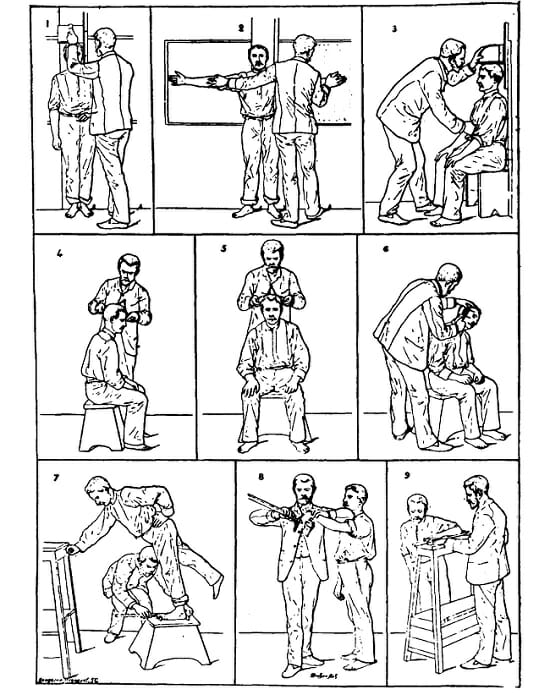This tool becomes one of the effective modern measuring instruments. Body composition size structure circumference with length and somatype.

Anthropometric Data An Overview Sciencedirect Topics
The assessment of nutritional status requires a series of stature weight and other anthropometric dimensions.

. Anthropometric measurements are used to measure the body measurements. To be successful on this quiz students will need to know the following information. The following issues need to be thoroughly reviewed.
Anthropometric measurements are systematic measurements of the size shape and composition of the human body. Tape measure weighing scale d. This instrument can measure more than 34 dimensions of the human body.
Authors reported that anthropometric measurement might be useful in detecting high risk patients with CR-POPF. Length of outstretched arm from one index fingertip to the other. Age Particulate matter in the air Arsenic content of well water Body weight in kilograms Distance from residence to a landfill QUESTION 2 1P Precision and accuracy are the same.
Length of outstretched arm from shoulder to the index fingertip. In addition medical assistants take anthropometric measurements or the height and weight of patients and document them in the medical record. Measures of subcutaneous adipose tissue are important because.
Length laying down height standing up weight head circumference waist circumference and skin fold. Anthropometry Chair is an instrument used to measure the dimensions of the human body. Which of the following is an anthropometric measure.
The correct answer is - C Bodyweight. Anthropometric measurements body weight stature composition and area measurements such as circumferences waist and hip skinfold SF and bone dimensions. Nthropometrics are a set of non-invasive quantitative body measurements used to assess growth development and health parameters.
Applied to occupational injury prevention anthropometric measurements are used to study the interaction of workers with tasks tools machines vehicles and personal protective equipment especially to determine the degree of protection against dangerous exposures whether chronic or acute. Importance of anthropometric measures. A broad range of anthropometric techniques used for assessing adults and children will be described in class lab this week and next and the suggested reading material.
Measurement of body size weight an dproportions circumference Types of anthropometric measures. 5 Chest circumference midpoint of nipple line Direct measure. Another study used anthropometric measurements as a marker of physical fitness progress in women aged 60 to 100 years.
Validation of laser scanner for the collection of anthropometric measurement S93 Table 1 Manual measurements collected Measurement type Measurement Method obtained Standard used Circumferences Neck circumference C7 landmark Direct measure Chamberland et al. Can be direct or derived. They found that pilates combined with hydro-gymnastics decreased BMI weight and hip-to-waist measurements.
Anthropometric measurement can be used to estimate total body fat regional fat and fat distribution. According to the American Academy of Pediatrics and the Child Health and Disability Prevention CHDP Program Health Assessment Guidelines guideline 4 accurate. Vital signs frequently measured and recorded by the medical assistant include temperature T pulse rate P respiratory rate R and blood pressure BP.
Which of the following patient conditions can affect vital sign measurement. How do we measure waist circumference. Anthropometric measures of relative adiposity or fatness are BMI skinfold thickness waist hip and other girth measurements.
Some of the advantages of measurements that use anthropometric chairs are. Choose among the set of equipment used to measure the body mass index. Up to 24 cash back Nutritional anthropometry refers to the measurement of body weight and dimensions and the subsequent interpretation of the measurements in relation to appropriate reference data.
A-Blood pressure B-Weight C-Height. BMI is widely used as an index of relative adiposity among children adolescents and adults. See the answer See the answer done loading.
Measure the distance around the smallest area below the ribcage and above the umbilicus at the top of the iliac crest. QUESTION 1 Which of the following is an anthropometric measurement. They are useful in many fields including athletics healthcare and research.
The instrument used to measure the BP is the. Anthropometry is the study of the measurement of the human body in terms of the dimensions of bone muscle and adipose fat tissue. Anthropometric Measurements Please measure the following features and record each measurement in centimeters.
3 body frame size. The core elements of anthropometry are height weight head circumference body mass index BMI body circumferences to assess for adiposity waist hip and limbs and skinfold thickness. Authors should analysis the previous established risk factor of CR-POPF such as drain amylase fluid on postoperative day 1 if they use final diagnosis of the tumor.
View the full answer. Anthropometric measurements including length or height weight and head circumference help providers determine if a child is growing properly and can indicate when the childs health and well-being are at risk. What are the 5 factors used in anthropometry.
It refers to the number of times a. This preview shows page 4 - 6 out of 6 pages. Obesity is a major modifiable risk factor of cardiovascular disease stroke diabetes mellitus dyslipidemia and hypertension.
Length of lower arm from elbow to wrist. Anthropometric measurements used to study the interaction of workers with tools equipment workstations and PPE include which of the following. Anthropometric measurements include all of the following EXCEPT.
Key vocabulary Benefits of anthropometric measurement Tools used to measure body composition. Weighing scale catheter 2. A-Stethoscope B-Sphygmomanometer C-Spirometer D.

Anthropometry Definition History And Applications Biology Dictionary


0 Comments